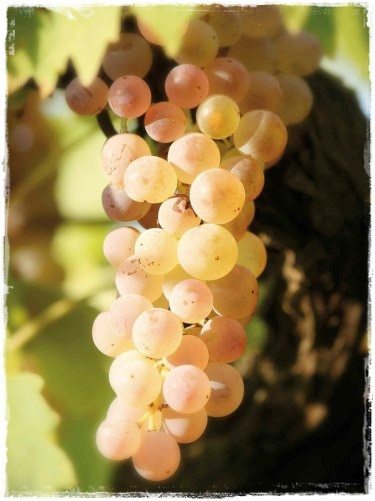When it comes to Abruzzo wines, the thought of Montepulciano and Trebbiano, the two most famous DOC wines produced in this region, is recurrent. However, the Italian wine production boasts a great variety of little-known wines, produced from native vines that are real enological pearls.
In this regard, today we will talk about Cococciola which is precisely a native Abruzzo white grape variety, rediscovered in recent years, deeply linked to values and traditions, such as that of transhumance. It is precisely the latter that has allowed it to expand, up to the north of Puglia.

Cococciola is an excellent wine that amazes and delights the palate; it is fair to think that in the not too distant future, Abruzzo viticulture can also be based on the production of this rare vine. It shows to have a very versatile character, like that of the great white grape varieties, which also favor sparkling wine. The origin of the name is rather uncertain, depending on the area, there are several statements and hypotheses in this regard. For many it derives from "chicocce", which in the Abruzzese dialect would mean pumpkins or courgettes, due to the particular streaks typical of the grape that would recall those of vegetables. Another hypothesis refers to the "coccia", or "shell" or "zest", which would refer to the thick peel of the grape. Or it could derive from "coccione", that is "big head" or "big head", always doing reference to the characteristics of the grape which is larger in size Finally, some farmers and winegrowers in the area would derive the name from the noise of the pressing of these specific grapes.

Until recently, the wine produced with this ancient vine was only used as a blending wine for Trebbiano d'Abruzzo, to increase its acidity. It was thanks to the work and passion of many winemakers and producers that, fortunately, Cococciola was rediscovered and enhanced for its excellent organoleptic and chemical-physical characteristics, where it stands out for its natural alcohol content and the right acidity. The wines produced by vinifying the grapes of this fantastic vine in purity are truly fantastic and immediately recognizable. So deserving to obtain the IGT “Terre di Chieti Cococciola” label and above all the DOC “Abruzzo Cococciola DOC”, in 2010.

As already mentioned, Cococciola is a robust and vigorous vine, with a large and thick-skinned grape; once the grapes have reached complete ripeness, very evident characteristic brown streaks appear. This surprisingly productive variety was not used in blending with Trebbiano d'Abruzzo only to increase its acidity, but above all to increase the quantity in production. The surface of the vineyards in Cococciola are about 900 hectares, and are located in some areas of the Teatino-Frentana area, in the province of Chieti. The conformation of the territory, but also the perfect climatic conditions, with the considerable diurnal-nocturnal temperature range, favor an optimal ripening of the medium-late grapes. Thanks to the right combination of these factors and the cultivation and enological techniques used, in particular that of the Abruzzo pergola training system, it is possible to produce excellent wines with strong typical distinctive elements, which unequivocally identify the wines produced with this strong grape variety. .
The Cococciola in production must be present for at least 85% of the total grapes, 60% for the sparkling wine.

In the glass, still wines show off a beautiful straw yellow color with golden reflections. The olfactory profile is intriguing, it is in fact defined by floral and herbaceous scents mixed with pleasant fruity aromas, but the most particular are the citrus notes which are the result of the wide range of "varietal aromas" of the starting grapes. The taste stands out for its great sapidity and freshness, and its distinctive acidity which makes it very suitable for the production of sparkling wines, both classic and charmat methods, with great finesse, pleasantness and the inevitable freshness. This special wine with its aromaticity and its great freshness, is excellent with seafood appetizers and raw fish, in particular with sushi, a combination in which the flavors of the fish are supported by those of the wine, without altering them. A wine particularly suitable for an entire seafood menu.
And again with fresh cheeses with a sweet tendency and with good fatness, such as mozzarella, because the freshness and acidity of the wine will be able to mitigate the fatty sensations of the cheese.
And now all that remains is to taste this great, ancient, and at the same time new, incredible wine.













 Include a free greeting card by writing your message in the dedicated field at Checkout
Include a free greeting card by writing your message in the dedicated field at Checkout





